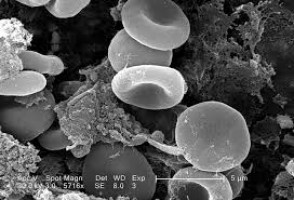
Tisch Cancer Center scientists developed unique models of the deadliest blood cancer, acute myeloid leukaemia (AML), creating a transformative resource to study this cancer and eventually its drug response and drug resistance, according to research presented as a late-breaking abstract at the annual meeting of the American Association of Cancer Research and simultaneously published in Blood Cancer Discovery, a journal of the American Association for Cancer Research.
This discovery is the first time that powerful models have been created that are nearly identical to AML found in patients. The researchers said that these models represent the disease accurately in genetic composition and in disease characteristics found in laboratory cell cultures, animal models and patients.
This is an important development because AML has only a 29 percent survival rate, and it’s fast-growing cancer. It’s often widespread in the bone marrow and the blood when it’s first discovered in a patient, so being able to study cancer, its progression and its response to drugs in accurate and viable cell lines is crucial.
“We show that these models are nearly identical to the leukaemias of the patients that they came from and thus are faithful models for acute myeloid leukaemia,” said senior author Eirini Papapetrou, MD, PhD, Professor of Oncological Sciences and Medicine, Hematology and Medical Oncology at The Tisch Cancer Institute, a part of the Tisch Cancer Center, and Director of the Center for Advancement of Blood Cancer Therapies (CABCT) at the Institute of Regenerative Medicine at Mount Sinai. “Animal models do not provide accurate genetic models of AML, AML cells from the bone marrow or blood survive poorly outside of the body, and AML cell lines carry many additional genetic and karyotypic abnormalities that make them distinct from primary tumours. Our new models are groundbreaking tools that can uniquely empower leukaemia research.”
To create these models, researchers used genetic reprogramming technology to convert blood or bone marrow cells from 15 patients representing all major genetic groups of AML to a particular type of stem cells (called induced pluripotent stem cells) that can mimic different stages of disease progression, from a healthy state to pre-malignancy and finally full-blown leukaemia. Importantly, the leukaemia cells derived from these lines can be transplanted into animal models and create a remarkably similar disease as in the patients.
Many of these lines have been distributed to other researchers, who, along with Dr Papapetrou and her colleagues, will pursue a number of new studies into leukaemia pathogenesis and drug responses. A commentary on the significance of Dr Papapetrou’s journal article in Blood Cancer Discovery explains how the study advances the field, both practically and conceptually.
"The large panel of genetically defined iPSC clones . . . are versatile disease models and important resources for the community," the commentary, written by Sergei Doulatov, PhD, Associate Professor in the Division of Hematology at the University of Washington, says. "This study dispels the notion that leukaemias are difficult or impossible to reprogram."
Source: Tisch Cancer Center
We are an independent charity and are not backed by a large company or society. We raise every penny ourselves to improve the standards of cancer care through education. You can help us continue our work to address inequalities in cancer care by making a donation.
Any donation, however small, contributes directly towards the costs of creating and sharing free oncology education.
Together we can get better outcomes for patients by tackling global inequalities in access to the results of cancer research.
Thank you for your support.